Authors:
ABSTRACT
Aim
This research was aimed to investigate the in vivo and in vitro performance of traditional and novel methods in the
detection of occlusal caries in primary teeth.
Methods
One hundred twenty primary molar teeth were assessed
by two examiners both in vivo using ICDAS II, radiographic examination, DIAGNOdent pen, CarieScan PRO and SoproLife camera and
in vitro using the mentioned diagnostic methods except radiographic examination. In addition, in vitro examinations were repeated 2
weeks later. After sectioning and evaluation under stereomicroscope, the lesion depth was determined with Downer’s histological
criteria. Sensitivity, specificity, positive and negative predictive value, accuracy and area under the ROC curve were calculated at D1
and D3 thresholds. The intra- and inter-examiners’ reproducibility were analysed using Cohen’s kappa statistics and intraclass
correlation coefficient.
Results
Intra- and inter-examiner repeatability were high for all methods. While ICDAS and SoproLife camera
showed the highest sensitivity value at D1 and D3 thresholds in vivo, radiographic examination showed the lowest sensitivity values.
While ICDAS and SoproLife camera showed the highest sensitivity values at D3 threshold in vitro, CarieScan PRO showed the lowest
sensitivity value.
Conclusion
The ICDAS II method could be sufficient alone in diagnosis of occlusal caries of primary teeth.
However, SoproLife camera may be useful in monitoring caries lesions.
PLUMX METRICS
Publication date:
Keywords:
Issue:
Vol.18 – n.2/2017
Page:
Publisher:
Cite:
Harvard: A. Kockanat, M. Unal (2017) "In vivo and in vitro comparison of ICDAS II, DIAGNOdent pen, CarieScan PRO and SoproLife camera for occlusal caries detection in primary molar teeth", European Journal of Paediatric Dentistry, 18(2), pp99-104. doi: 10.23804/ejpd.2017.18.02.03
Copyright (c) 2021 Ariesdue

This work is licensed under a Creative Commons Attribution-NonCommercial 4.0 International License.
